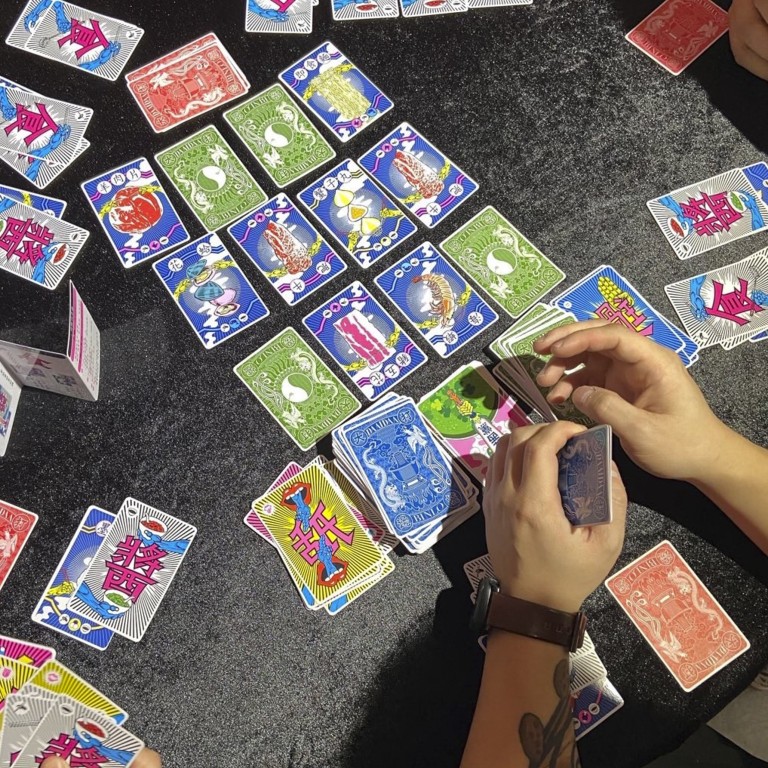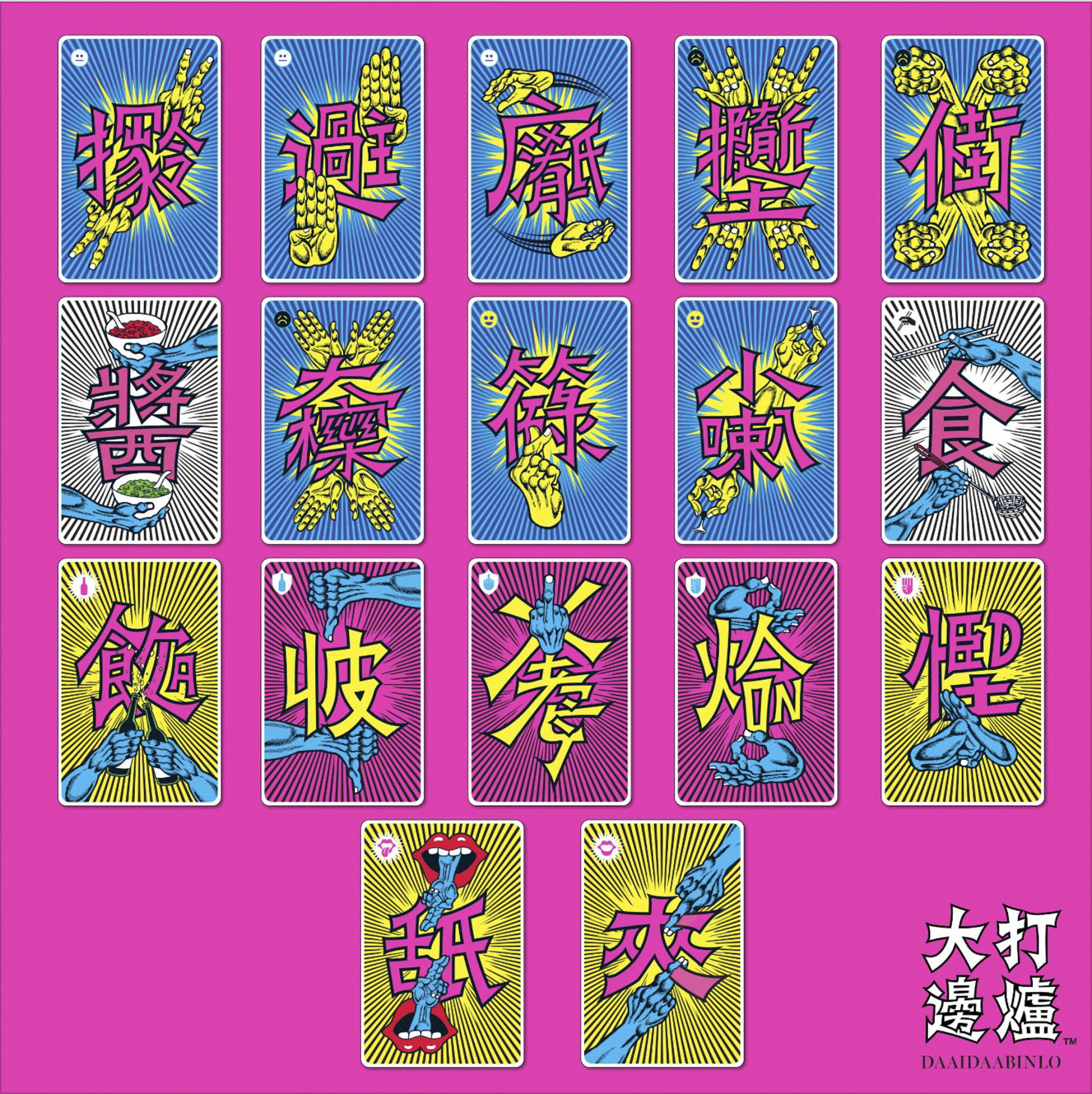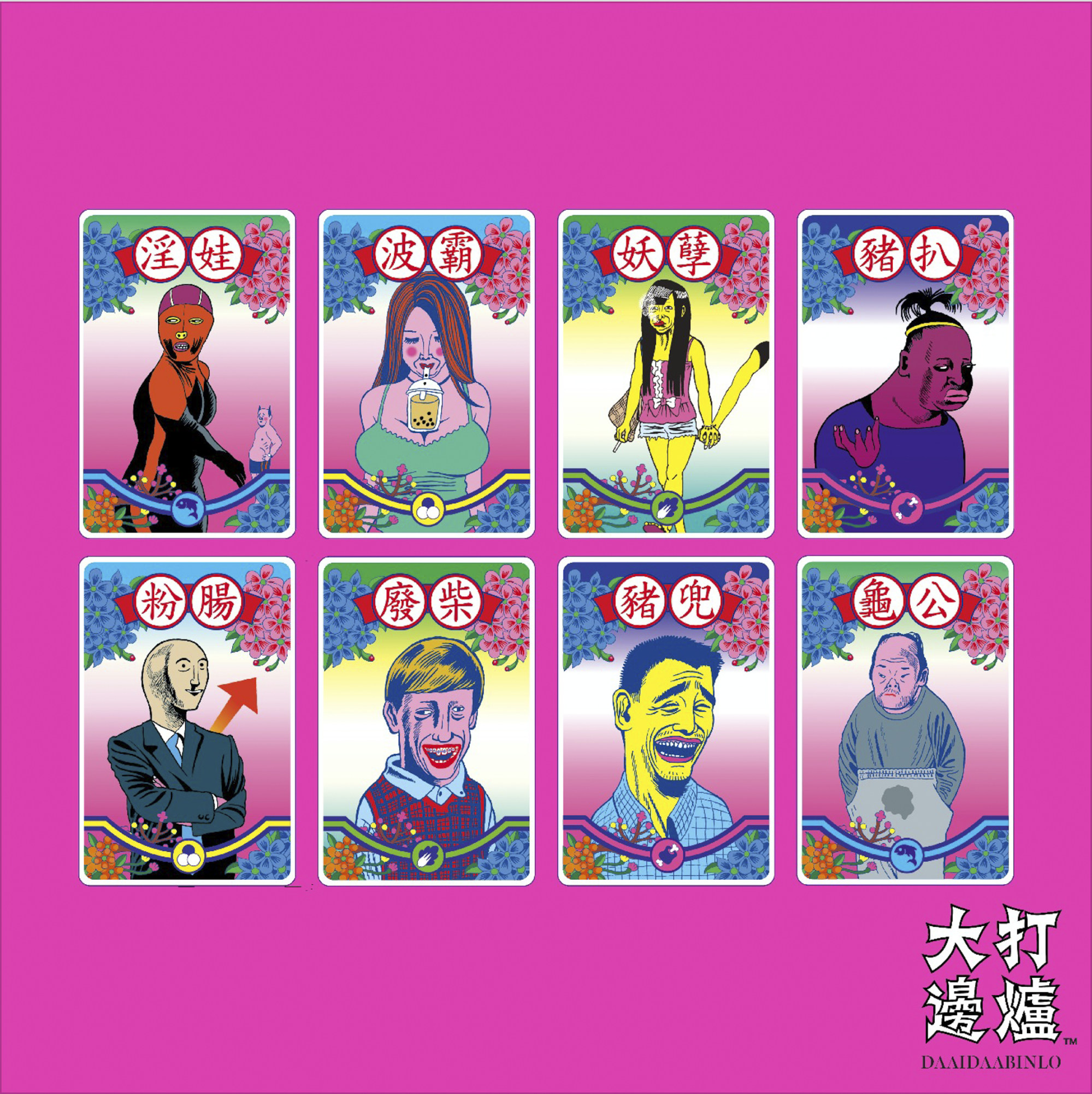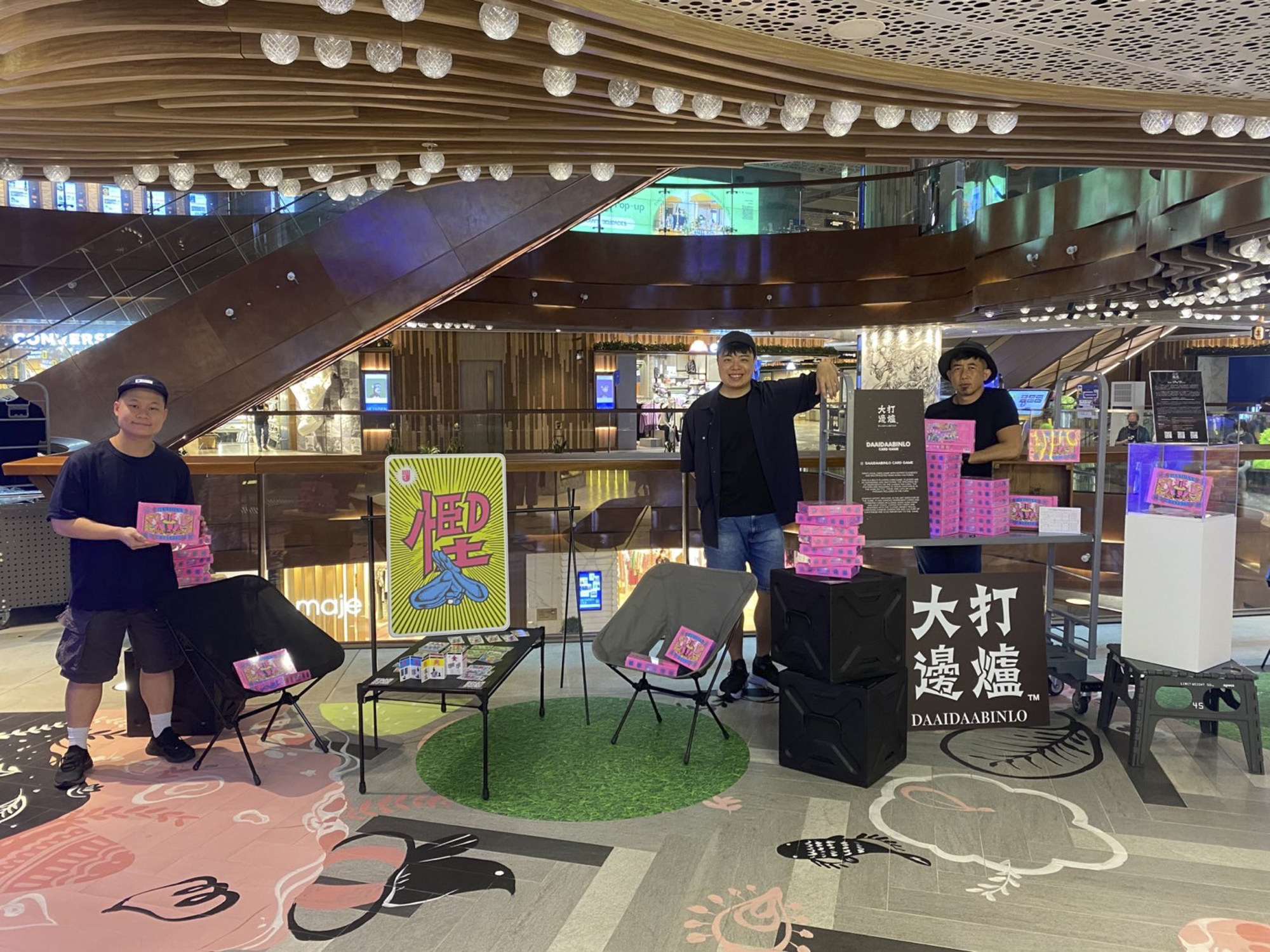
Hotpot card game that plays on Cantonese slang and memes and the creators behind it, whose goal is to help preserve Hong Kong culture
- Daai Da Bin Lo, or ‘The Big Hotpot’, is a fast-paced and colourful card game intended to bring people together after the unhappiness of the Covid-19 pandemic
- The game, with its hotpot theme, highlights Hong Kong culture with memes and Cantonese slang words ‘in danger of disappearing’, says one of its creators
It may be 36 degrees Celsius (97 degrees Fahrenheit) outside during the summer, but for a true Hongkonger, stifling temperatures are never an obstacle when it comes to enjoying hotpot.
In fact, for three creative Hongkongers, a shared love of hotpot became the inspiration for their passion project: a card game that uses a mixture of local dining culture, popular slang and delicious depictions of hotpot ingredients to get people talking.
Daai Da Bin Lo, or “The Big Hotpot”, is a new card game by Kevin Lok Tin-ki, Paul Tsang Lik-san and Joe Man Wai-yip, who all work in creative industries in Hong Kong.
The game was soft-launched in November 2021 at a pop-up event space in Kowloon’s working-class Sham Shui Po neighbourhood. The trio recently displayed their game at another pop-up at the upscale K11 Musea mall in Tsim Sha Tsui.

“Why did we do it? All three of us are actually not really people who play board or card games,” laughs Man. “But in the last three years, we’ve seen how Hongkongers have been really bored and quite unhappy. We wanted to use our creativity to build something that they can really connect with.”
Hotpot and card games are two things that are best enjoyed in person with friends, they say, and that became the genesis of Daai Da Bin Lo – a game where anything goes.
Everything you need to know about a Chinese food favourite, hotpot
“Hong Kong is a place where many things happen – whether it’s a meeting of East and West, or the exchange of ideas,” says Tsang. “Hotpot is really something that can satisfy a lot of people, because you can freely add whatever you like.
“The image we had in our heads when creating the game around the theme of hotpot had a lot to do with these characteristics.”
The aim of the game is simple: get as many points as possible by grabbing as many ingredients out of the hotpot as you can.

Players must have specific cards in hand before they can, say, pick a “noodle” or “fatty beef” card out of the pool – and must use special “sauce” cards in order to take them out of play.
There are punishment cards too, such as one that uses the crude Cantonese slang for “trip up”, and character cards that are based on popular memes, using nicknames such as “pork chop” – Cantonese slang for an unattractive woman.
The esoteric phrases and nostalgic look of the game – which was brought to life by celebrated Hong Kong artist Rex Koo – were things its three creators insisted on having.
When you’re playing the game, there’s another level of enjoyment where you’re discovering the little extra details
The instruction booklet for the game resembles an order form commonly found in hotpot restaurants, on which diners typically tick off their desired ingredients before handing it over to staff.
“It’s all about Hong Kong culture, with visual elements and iconography that highlights that,” says Lok. “We add a lot of small details that can represent the culture of hotpot or Hong Kong.
“So when you’re playing the game, there’s another level of enjoyment where you’re discovering the little extra details inside.”

In addition to creating the card game, the team has spun Daai Da Bin Lo off into a popular meme account on Instagram, where they pump out content that quickly goes viral.
Man spends his time diligently researching and dreaming up ideas for the account “like a journalist would”, and says a lot of the inspiration comes from literally planning hotpot meals.
“I’m always looking for things that people will relate to,” he says.
“A lot of inspiration will just come out of nowhere. We’re also doing a bit more on hotpot general knowledge. We get a lot of questions from followers, too. So they give us a lot of inspiration.
“We’ll ask questions like, ‘What soup bases do you prefer?’ Their answers also feed back into our content,” adds Lok.
The possibilities of hotpot are endless, say the friends. “The most common reaction we get [from players] is that they crave more – they want more ingredients, more characters,” says Tsang. “We’ll consider doing booster packs and keep evolving the game.”

There is plenty of inspiration, and the trio want to focus on making sure the game continues to celebrate the essence of Cantonese culture.
“We believe that Cantonese slang words like the ones we have in the game are in danger of disappearing already,” adds Man. “If we don’t try and preserve these distinctive words, there are no other places outside Hong Kong that would continue to use them.”
That said, the words and phrases are there – but without too much explanation offered. “The fact that they are there is to simply remind people that the Cantonese language is really special,” says Man. “And that it’s not so easily replaced.”

